MyCharge Portable Power Outlet Review: A Second Battery for Your Laptop
We may earn a commission from purchases you make after clicking links on this site. Learn more.As anyone who’s walked through an electronics market knows, there are now enough rechargeable power banks in the world to maintain a full charge on all our phones until approximately the heat death of the universe. Some of our recommendations on basic power banks can be found here.
The point of differentiation for the MyCharge Portable Power Outlet hinges on the inclusion of an AC outlet along with the USB charging ports. This gives the power bank extra value, powering devices that aren’t phones, tablets, or other USB devices.
As a camping companion or accessory to get extra work time in on a flight, it can be used to power laptops, small lamps, or desk fans when you’re not around a power outlet.
We weren’t impressed with the BatteryBox, a limited, Macbook-only portable battery we tested in the past. Would this MyCharge version be any better?
Features and Specifications
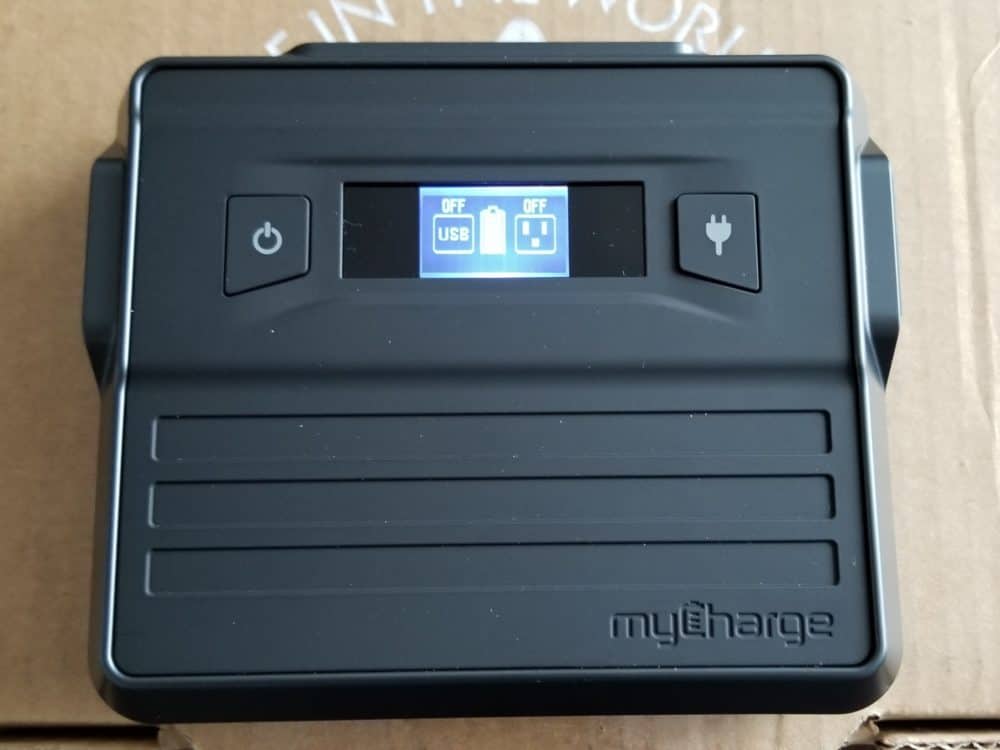
First off, this is a sturdy piece of hardware. The rugged casing makes it fairly impervious to dropping, although at 1.05 lbs (0.48 kg), you’ll want to make sure your feet are clear when it falls. It’s not waterproof, although the ports all come with covers to minimize the risk of dust or dirt getting into the unit.
With a capacity of 20,000mAh, it’s consistent with the largest power banks readily available for consumers and is right on the limit for many airlines and airports. The FAQ actually notes it’s compliant to take along on a plane.
One caveat to that, though: nowhere on the device does it indicate the 20,000mAh capacity. In some countries (particularly China), you may well have it confiscated for not having that information printed on the device.
20,000mAh is enough to charge an average smartphone nearly ten times. If you have a higher capacity phone battery, of course, you’ll get less than that. I estimate I can get 5-6 charges of my Samsung Galaxy S8.
There are four charging ports to handle several devices at once, up to a maximum draw of 65W. When that’s exceeded, the charging shuts down to prevent any damage to the power bank or your devices. A small LCD screen indicates how much battery life remains, as well as which ports are on and ready to use.
In addition to the AC outlet, there are two USB-A ports, and one for USB-C.
Output by Port
- USB-C Port: 3.0A
- USB-A Port #1: 2.4A
- USB-A Port #2: 2.4A
- Total Shared: 3.4A
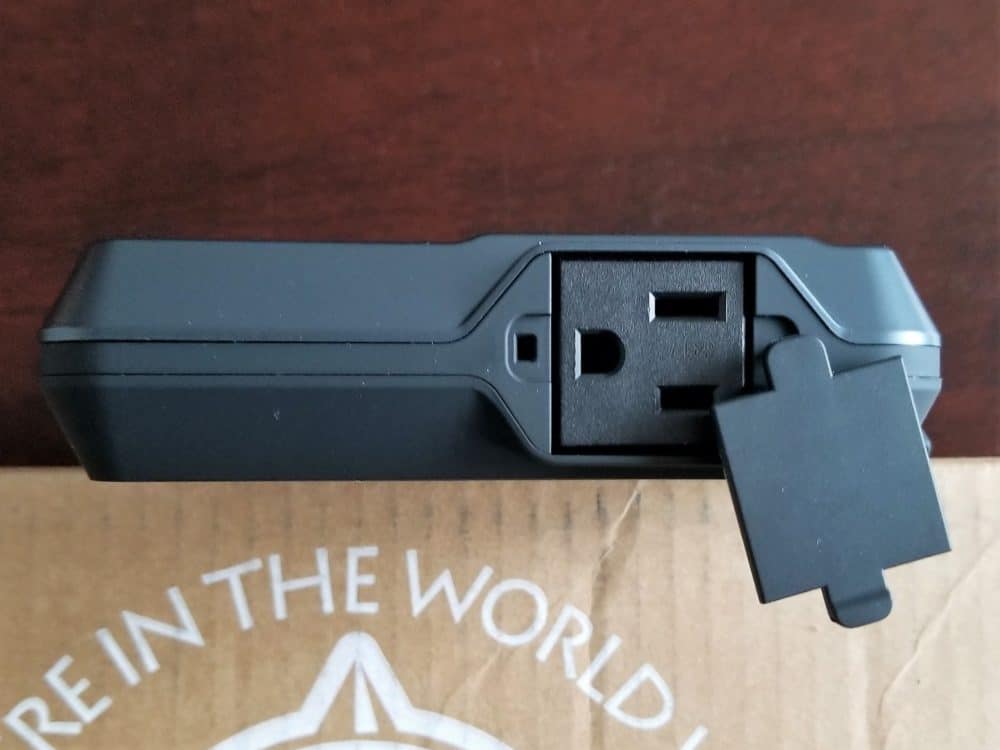
With a 65W limit, carrying along a blender for campsite margaritas is a no-go, but it’s perfect for most newer laptops, small electronic devices, and even small TVs.
Charging the unit requires the included DC charger and cable, which is always a bit of a negative for travelers who don’t want to carry around (see also: lose) more cables than absolutely necessary. The trade-off is that the battery recharges to full capacity in a few hours, rather than the 10+ hours many similar-capacity USB power banks take.
Real-World Testing
Getting to a full charge on the unit was surprisingly quick. I had it topped up in a couple of hours, which was about half as long as I was expecting.
It also allows pass-through charging, meaning the unit’s battery can continue to charge while you power something plugged into the USB outlets. That feature doesn’t extend to the AC outlet, unfortunately, which shuts off during the recharging process.
One design area that needs improvement is the power button positioning. There are two buttons on the face of the unit, one to activate the USB ports, one to activate the AC outlet.
The LCD screen notes which are on and which are off. The buttons aren’t fully recessed, however, so when I pulled it out of my backpack, the button had already been depressed and the unit was on.
I’m not sure how much power leaked out during that time, if any, since there’s an automatic 60-second shutoff when not in use. Still, it’s something to be aware of.
Charging my devices was a fairly standard operation. I used the AC outlet to recharge my laptop and the USB-A ports for my phone and tablet. It handled all three of them simultaneously without a hitch. Larger laptops might struggle with that if they’re in use at the time, but it was perfect with my ultraportable.
I did additional testing around the house with a standard desk lamp and electric razor. Both worked well through the AC outlet.
One interesting quirk: at one point, I tested plugging my phone charger into the AC socket. While it charged more quickly than via the USB-A port, a nice benefit, the power supply shut off before the phone hit 100%. Perhaps the trickle charge at the end was too low to register as active for the AC outlet, putting it into automatic shutdown mode.
Get regular updates from the world of travel tech and remote work
News, reviews, recommendations and more, from here and around the web
Verdict
The MyCharge Portable Power Outlet does the job it’s meant to. For a short overnight hike or a road trip where weight isn’t a major issue, it can be a good addition to get an extra day’s use out of a laptop.
Road warriors and digital nomads who spend significant time on flights, trains, or other places without accessible power outlets can fill the battery on most laptops at least once, doubling the amount of time available to get work done.
This comes in handy if you’re struggling to find an available wall socket at a café, often an issue in some parts of the world. The relatively rapid charging time of the device allows it to get back a fair amount of juice over coffee or dinner, too.
For regular travel, the extra weight, plus the need to carry around an extra charging cable, makes it a harder sell. If you only need to keep your phone or tablet charged, traditional USB power banks with similar capacity are a cheaper, lighter option.
On the camping front, my experience with wilderness gear is that it’s generally battery-operated and doesn’t need an outlet. Still, if you have an AC-powered lamp or other small device you want to run for a few hours without hauling along a generator, this isn’t a bad way to do it.
So, all in all, this is a niche product for a specific type of traveler. If you’re one of those people, and are happy with the weight and space trade-off required, it’s a solid choice.
The MyCharge Portable Power Outlet retails for around $180.
All images by author, except main image of unit in use (via MyCharge)

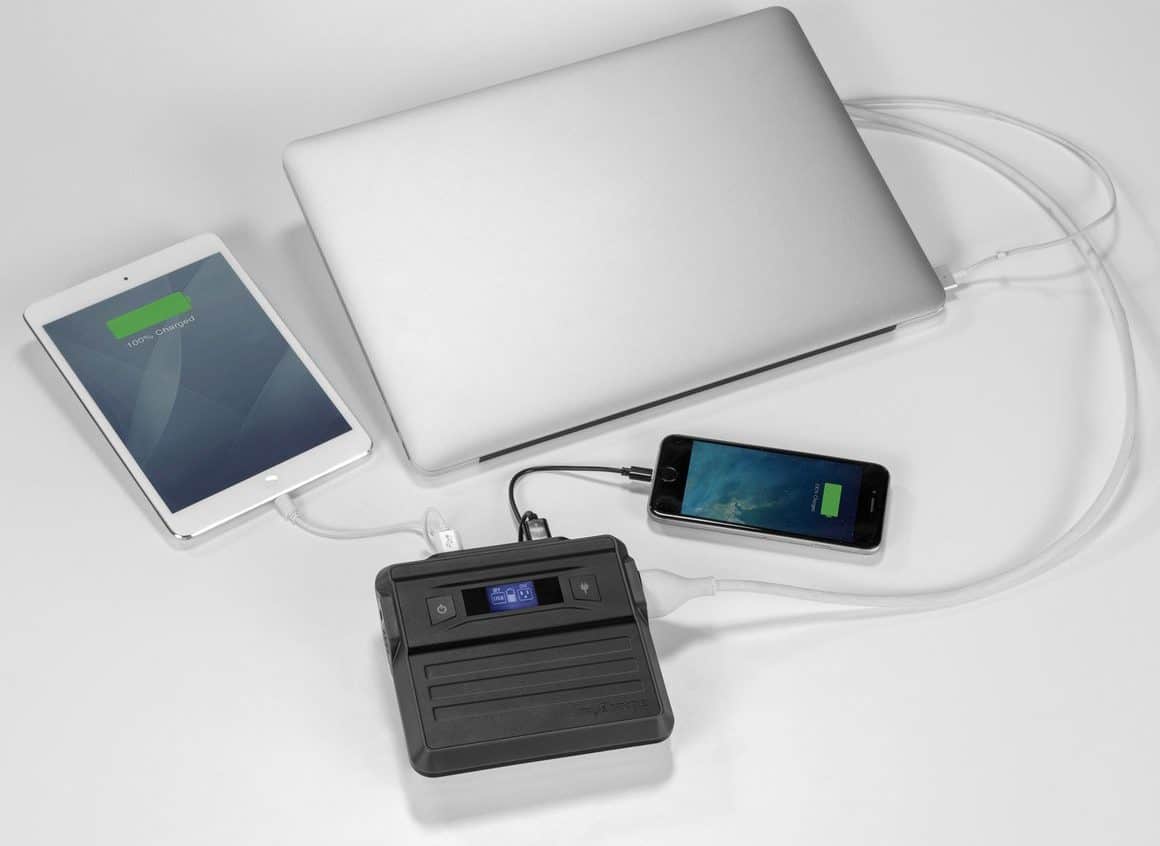
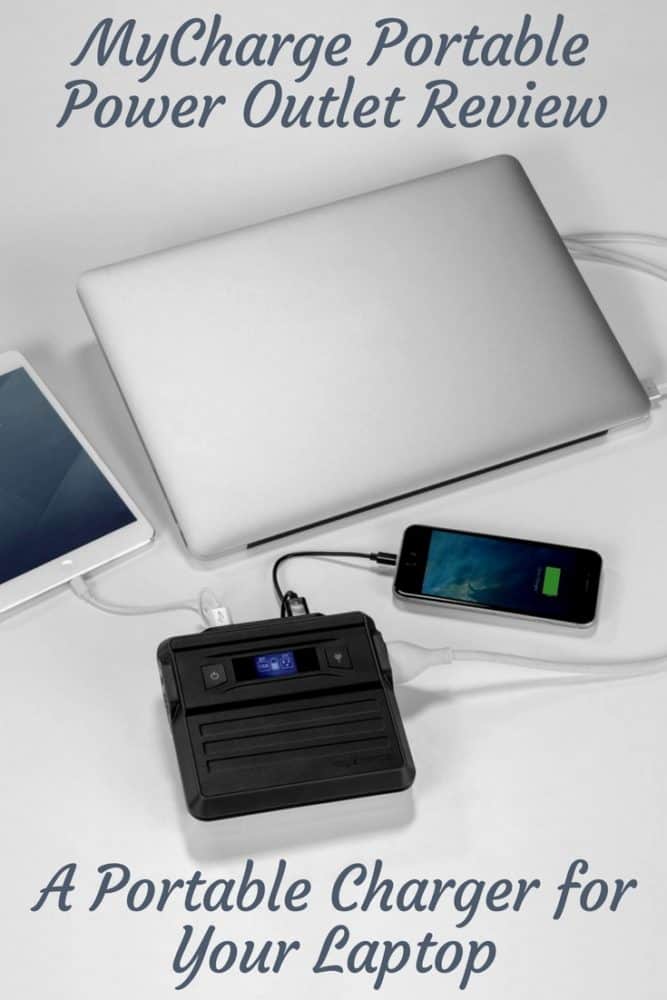


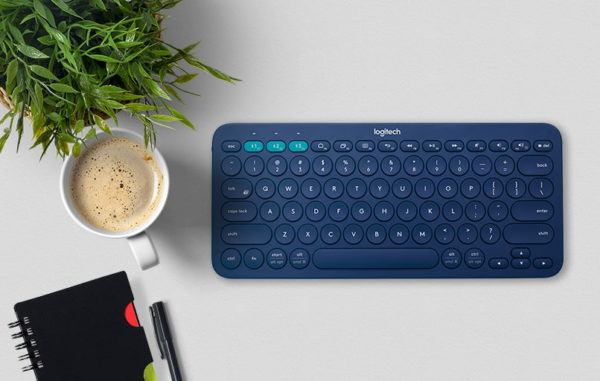



I use something similar. Check out the jackery power bar or the omnicharge which both work great!